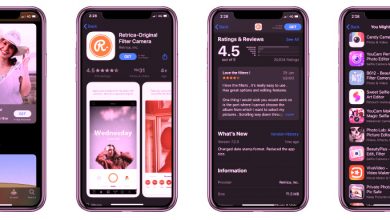Mobile App Design for Beginners: Tips and Tricks

The design of your mobile app plays an important role in its success or failure. The right design can be the difference between users who enjoy using your app and those who quickly get frustrated with it and uninstall it from their device entirely. These mobile app design tips will help you create a great user experience that makes users want to come back over and over again!
What is mobile app design System?
A mobile app design system is a tool that helps you create the look, feel, and overall user experience for your app. It includes a set of rules, guidelines, and best practices for designing your app. Plus, it can help you save time and money by reuse existing design elements instead of creating everything from scratch. That’s why we’ve created an easy-to-use tool that allows you to create wireframes for Android app development and iOS apps in minutes. You’ll be able to see how your designs will work on different devices and operating systems before you spend hours designing them.
The app design system features templates, layouts, icons, and more so you don’t have to start from scratch. The starter package includes the most popular UI elements such as menus, tabs, cards and more so that you can quickly build beautiful prototypes. And with 500+ device templates included in our library – we cover all popular device sizes including iPhone XS Max and Galaxy S10+. So what are you waiting for? Start building your perfect mobile app now!
Related Blog: Best Practices of Mobile App Design
Best Mobile App Design Tips
Font Styles, Right Colors, Size & Clarity the Right Way
One of the most important aspects of mobile app design is choosing the right font style, colors, size, and clarity. The font style should be easy to read, the colors should be eye-catching but not overwhelming, the size should be large enough to be easily seen on a small screen, and the clarity should be high so that text is easy to read. following these tips will help you create a mobile app that is both attractive and user-friendly.
- Choose an appropriate font style – the best options are serif fonts like Times New Roman or Georgia, or sans serif fonts like Arial or Helvetica. For example, use Arial if your app’s main language is English or if you want it to have a modern feel; use Georgia if your app’s main language is German or Russian and has a more traditional feel;
- Choose an appropriate color scheme – keep in mind what your target audience prefers when deciding what colors to use. If you’re designing a children’s app, choose bright pastel colors. If you’re designing an educational app for children, use black with white text (or vice versa).
- Choose an appropriate font size – at least 18px (or 16px depending on the device).
- Choose an appropriate clarity level – this depends on how often people need to see their screens while they’re using your app.
For example, for something like an airline app where you might need to check prices frequently, make the background light gray and don’t put any other objects on top of the text. But if you’re designing a game where players spend less time looking at the screen than they do playing the game itself, use darker backgrounds and make sure there’s no clutter around the area where users enter their name.
Users Reign Supreme
The most important thing to remember when designing a mobile app is that users are supreme. They should always be your number one priority. Keep them in mind when making decisions about everything from the layout to the color scheme. If you design with users in mind, you’ll create an app that they’ll love using. It’s easier to build something people will want than it is to convert something people already have into something they’ll want. It’s also easy to create features that will make your app more attractive. For example, by adding social media integration or analytics tools like Kissmetrics or Mixpanel, you can better serve your users’ needs and wants.
Make It Responsive
In today’s mobile-first world, it’s more important than ever to make sure your website or app is responsive. That means it should look good and work well on any device, whether it’s a phone, tablet, or laptop. Here are a few tips to help you design a responsive app. Keep in mind that there are many different ways to make an app responsive, so these aren’t the only solutions. There are also plug-ins, plugins, tutorials, apps, etc. to make this process easier.
Monitor Popular Sites & Apps – The first step to designing a responsive app is to keep an eye on other apps. A great way to do that is by looking at what’s popular in your field. Check out your competitors and see how they’ve designed their apps, keeping in mind how you want yours to be different or better. You’ll also want to look at apps with similar functionality as yours, but maybe are outside of your industry.
Use The Right Format
When it comes to designing your app, there are a few key things to keep in mind. First, you want to make sure that your app is designed in the right format. This means that it should be compatible with the devices that your customers are using. Second, you want to use high-quality images and videos. These will help your app stand out from the rest. Third, you want to make sure that your app is easy to use.
Understand the differences between screen sizes
Designing a mobile app can be a challenge, especially if you’re just starting out. One of the first things you need to do is understand the differences between screen sizes.
Screen size is measured in inches, and there are three main sizes: small, medium, and large. Small screens are typically under 3 inches, medium screens are 3-6 inches, and large screens are over 6 inches.
Each size has its own set of challenges. For example, with smaller screens you have less space to work with so it’s important to make every inch count. With larger screens, users might expect more detail or more options so make sure that your design has these features as well.
The design process doesn’t stop at sizing though; when it comes time to start creating your user interface (UI), think about how it will work on different sized devices before going ahead with any design changes.
Navigation should be easy
When it comes to mobile app design, one of the most important things to keep in mind is that navigation should be easy. Users should be able to find what they’re looking for with ease, and the overall design should be intuitive. Here are a few tips to keep in mind when designing your app’s navigation – Color is important – make sure you choose colors that don’t hurt people’s eyes or strain their vision.
– Provide breadcrumbs to help users know where they are within the app so they can easily get back on track if needed.
– It can also be helpful to provide an overview of your main features on the home screen.
Use resources to help you with the layout
When it comes to mobile app design, there are a ton of resources available to help you with the layout. You can find templates, tutorials, and more online. Plus, there are plenty of software programs that can help you with the design process. However, it’s important to remember that not all resources are created equal. Some may be better than others, so it’s important to do your research before using any of them.
Final Thoughts
Now that you know the basics of mobile app design, it’s time to start thinking about your own app. What problem are you trying to solve? How will your app stand out from the crowd? Keep these questions in mind as you start sketching out your idea.
The world of mobile app design is always changing, so make sure to stay up-to-date on the latest trends. And finally, don’t be afraid to experiment.




